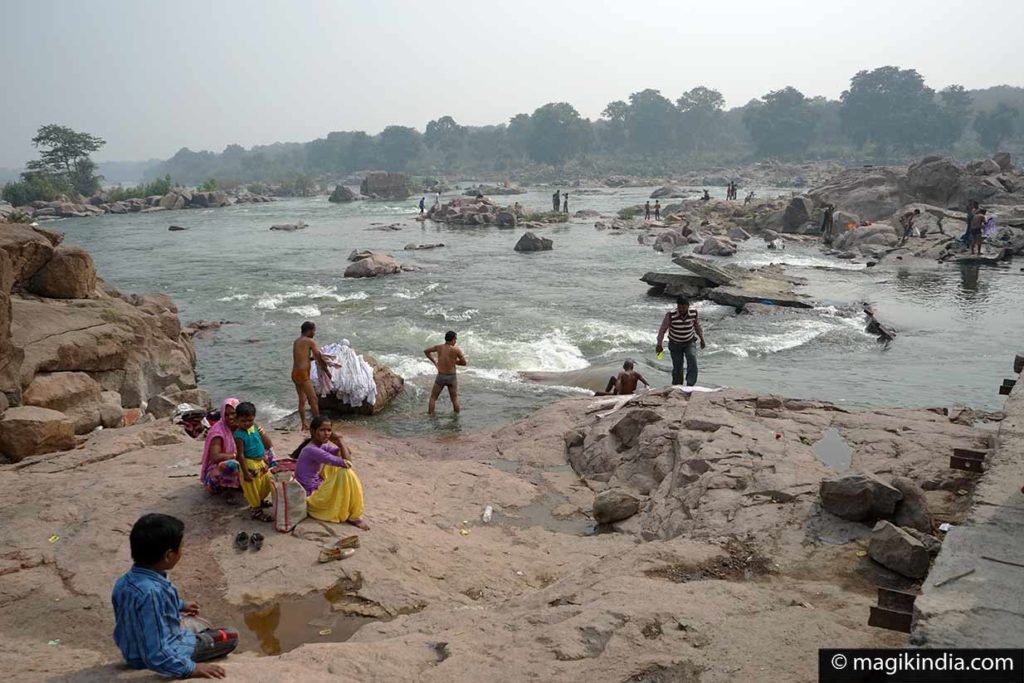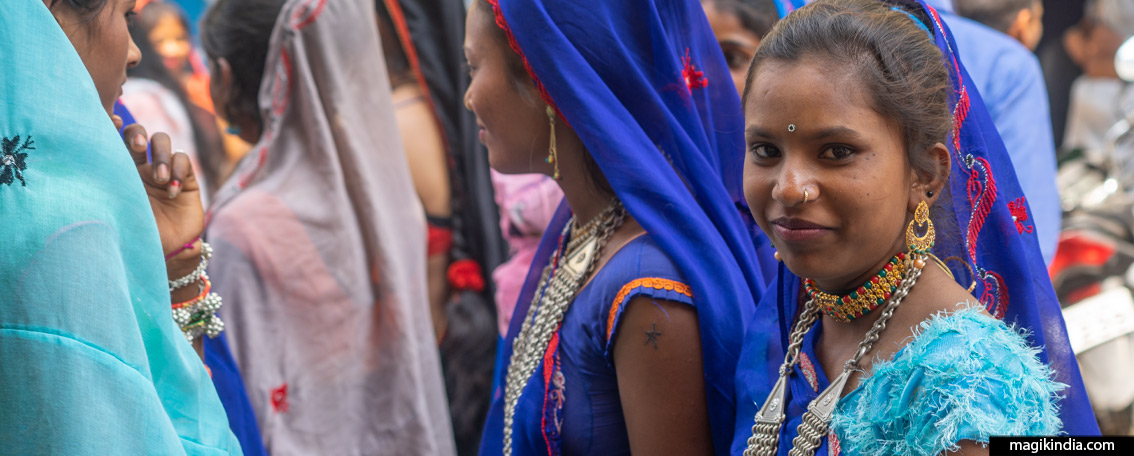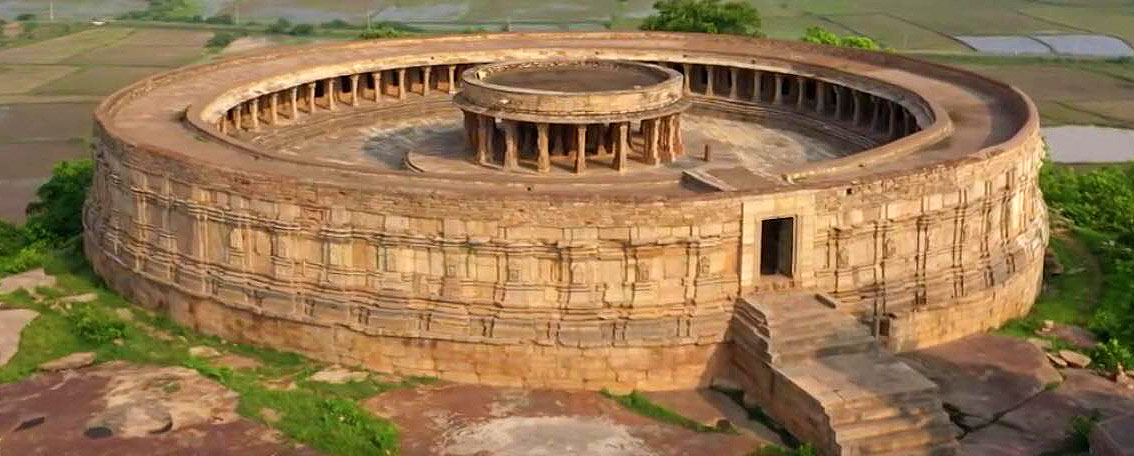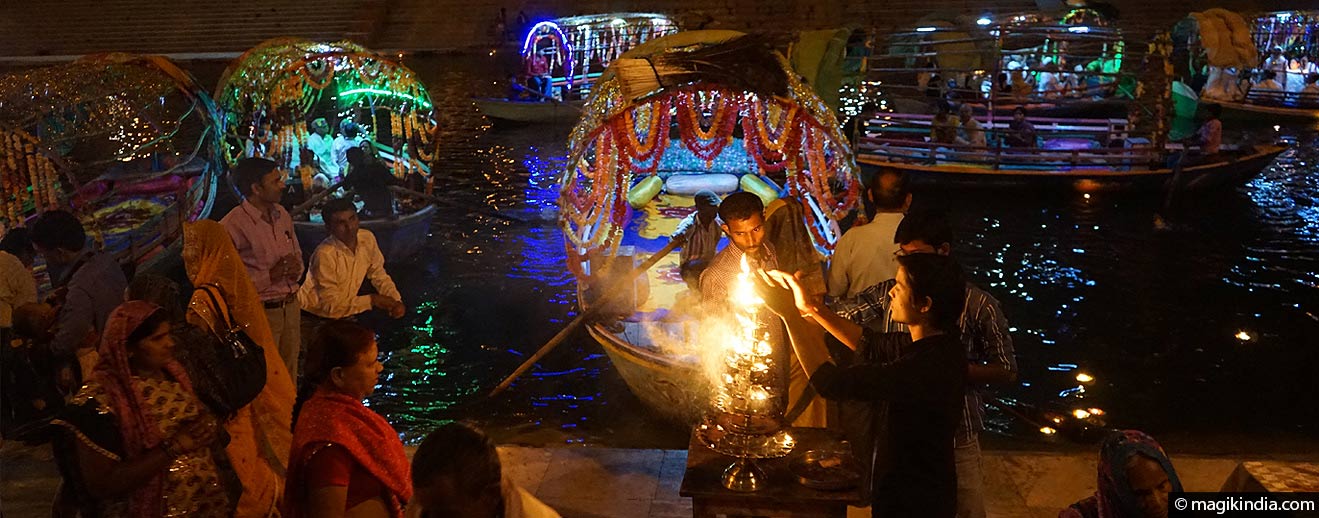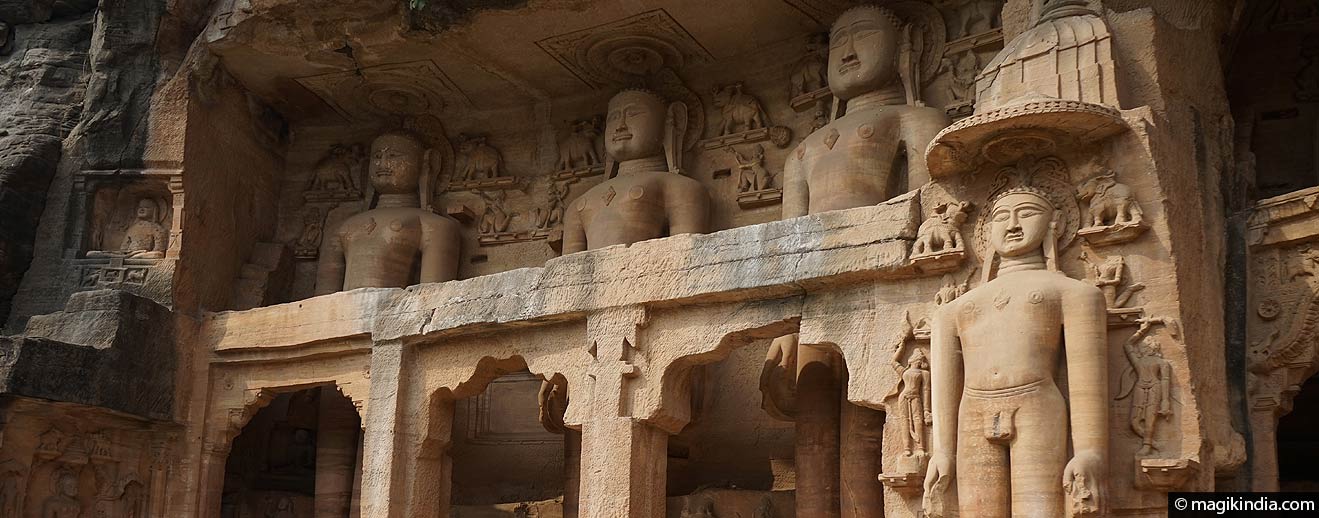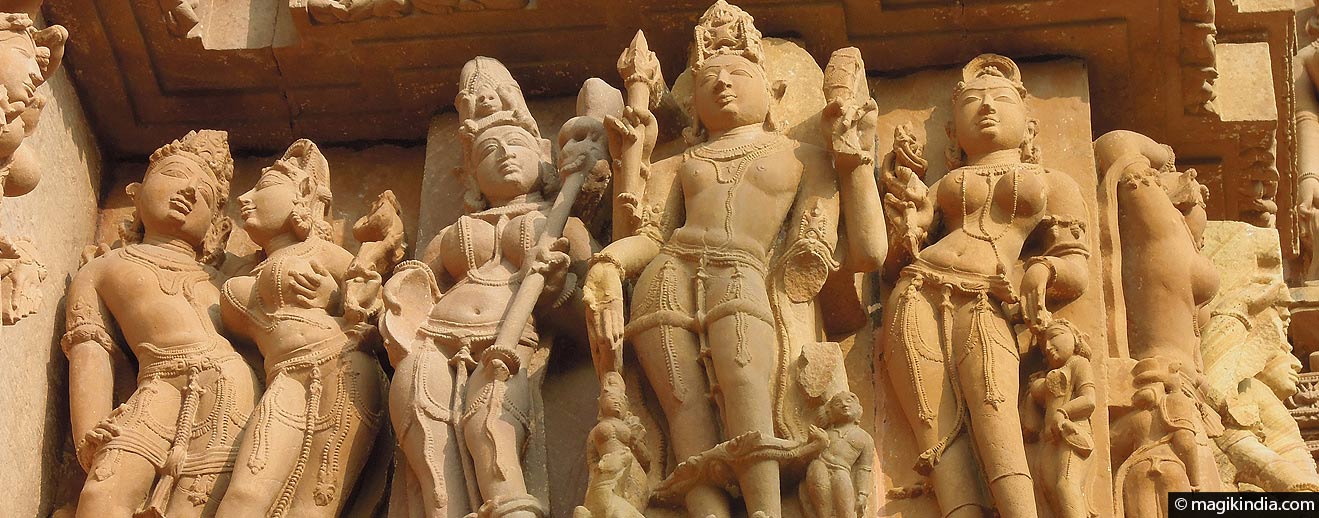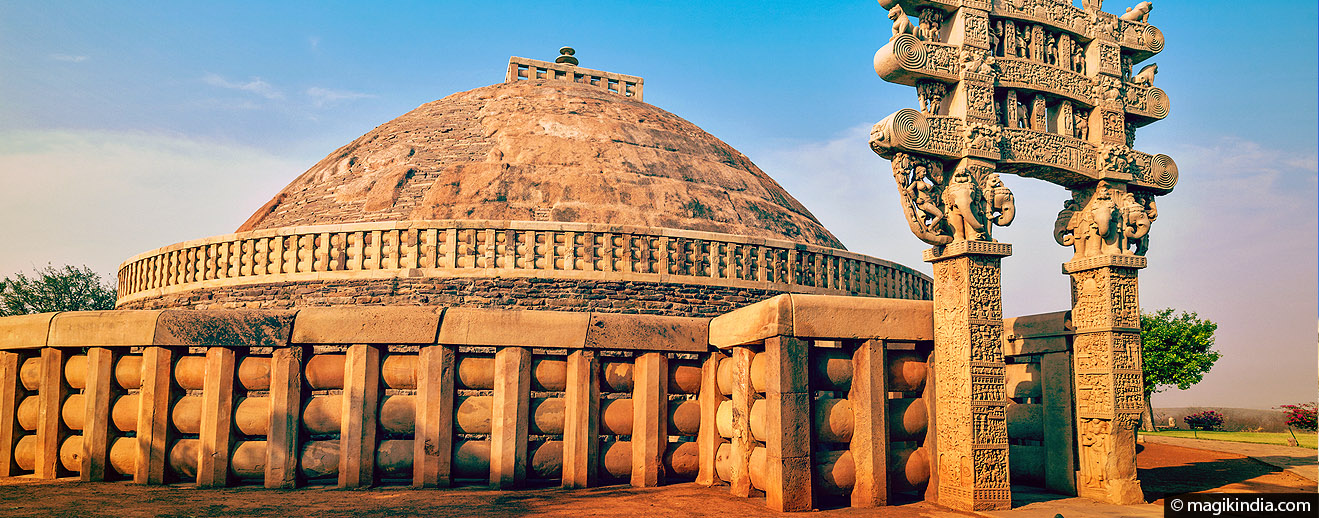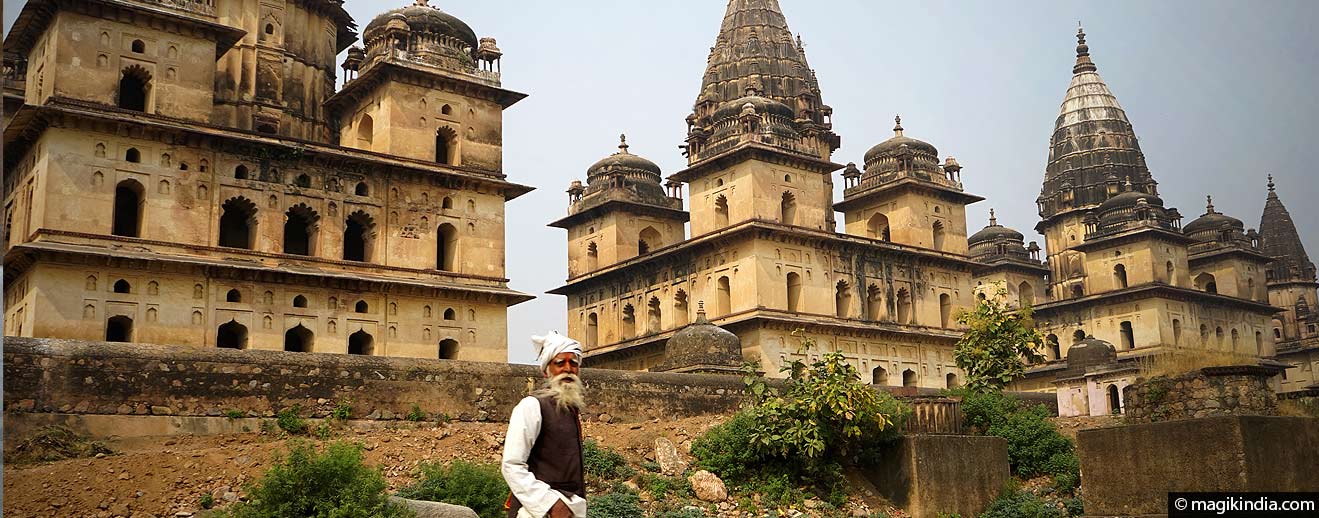
Orchha, the city of the Bundela kings
What’s astonishing at Orchha is that such a small town, nestling peacefully beside the river Betwa, should have so many sumptuous buildings. But once upon a time Orchha was the capital of a flourishing kingdom ruled by the Bundela kings.
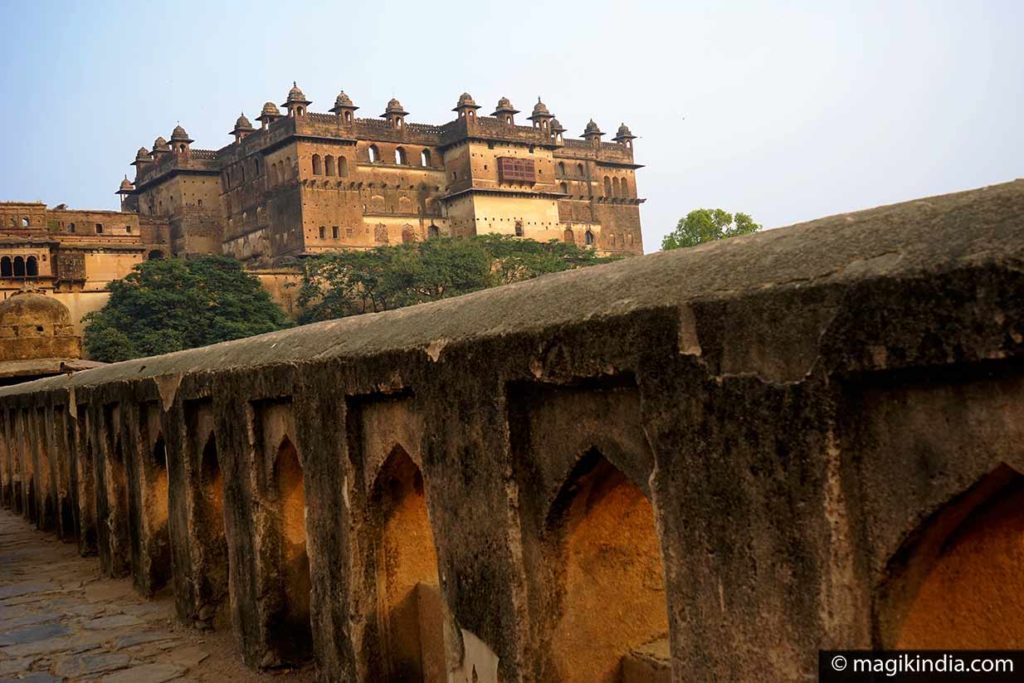
The town was built in 1501 by a Bundela chief called Rudra Pratap Singh, who became the first king of Orchha (1501-1531). The Bundelas were descendants of the Gaharwar Rajputs of Varanasi. Orchha was the Bundela dynasty’s capital from 1531 to 1783.
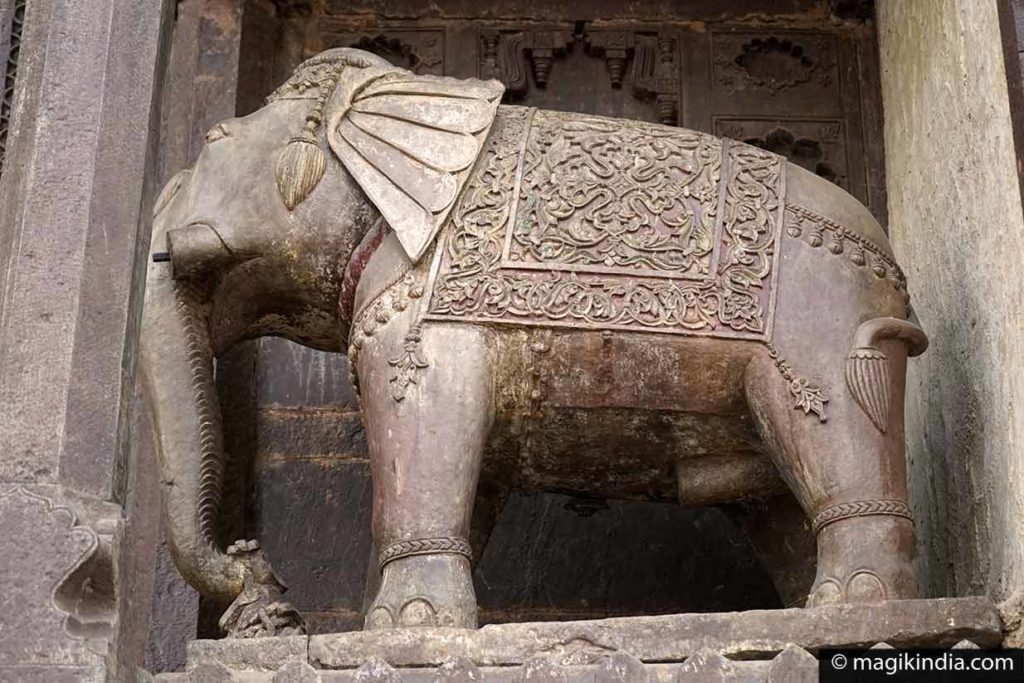
In 1602, Bir Singh Deo became the ruler of Orchha. This was the town’s golden age, when several palaces were built, including Jahangir palace in the fort. Bir Singh Deo drew the ire of the Mughal emperor Akbar by making an alliance with Akbar’s rebel son Jahangir. The Bundela kingdom was saved by Akbar’s death and Jahangir’s accession to the throne.
The Bundelas tried to rebel against subsequent Mughal emperors but failed each time. In 1783 they moved their capital to Tikamgarh.
And now, let’s visit Orchha!
Orchha Fort

Orchha Fort stands on an island in the Betwa, linked to terra firma by a multi-arched bridge.
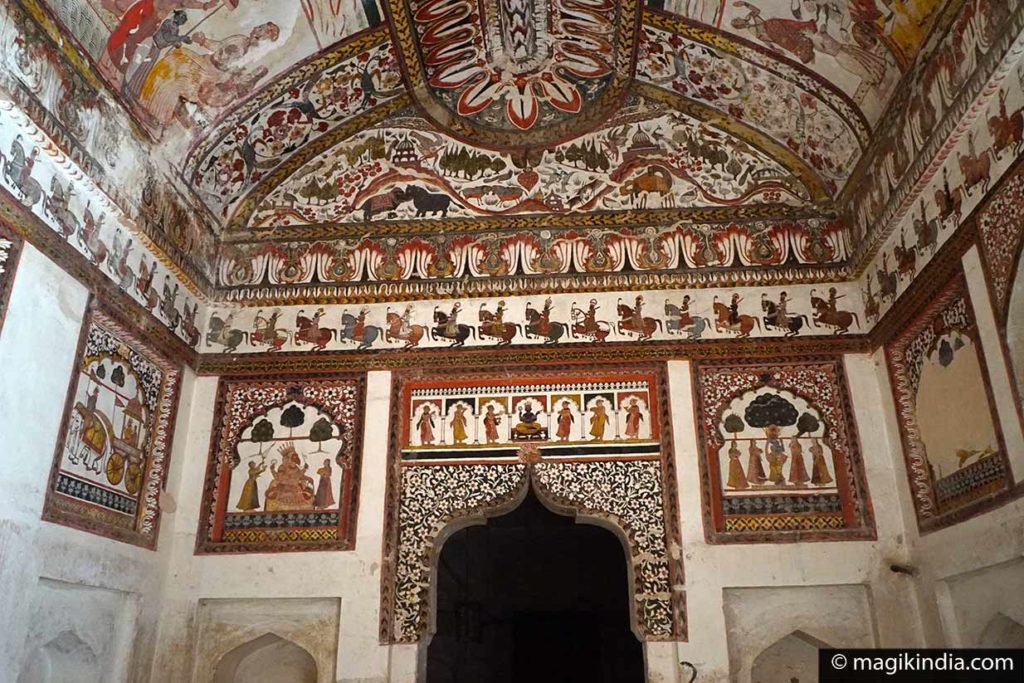
The fort, protected by a thick wall, contains four palaces: the Jahangir Mahal, the Raja Mahal and the Sheesh Mahal. There are also Turkish baths and a stable for camels. The complexe is rather eclectic as the buildings have been built at different times, according to the tastes of successive Bundelas sovereigns.
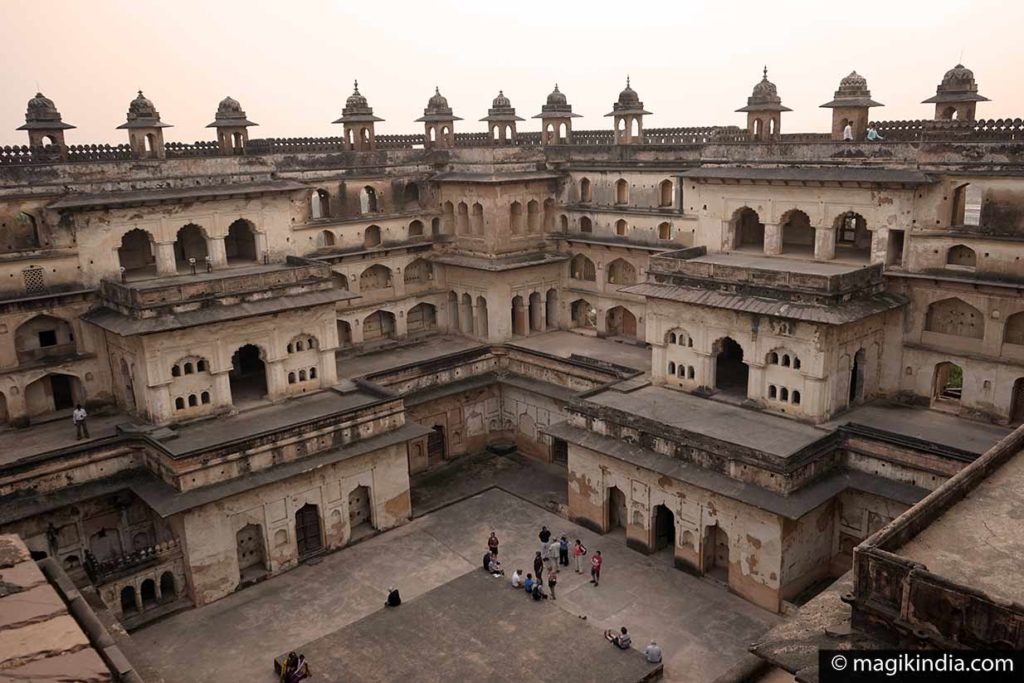
Chaturbhuj Temple
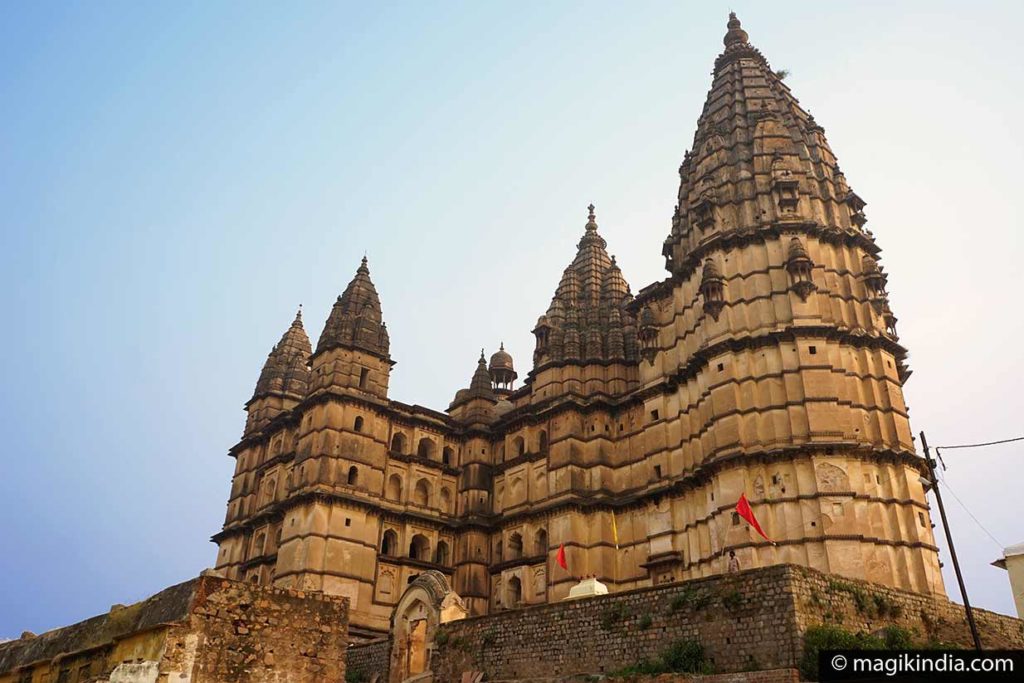
King Madhukar built this temple on its massive stone platform between 1558 and 1573.
It was built to house a statue of Rama, but the statue remained in the Ram Raja palace temple.
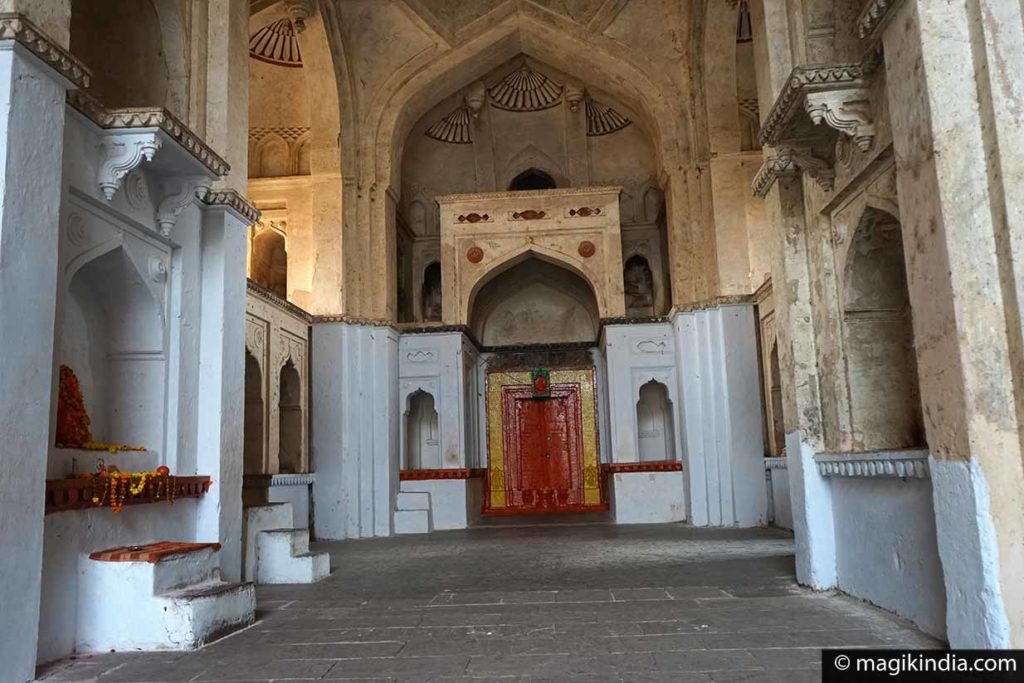
The building has an astonishing architecture; its massive structure is placed on a platform 5 m high with a tower that rises to more than 100 meters.
Its interior decoration is rather sober with several niches decorated with geometric patterns.
The shrine takes its name from a form of the four-armed god Vishnu, “chatur” meaning “four” and “bhuj” meaning “arm”.
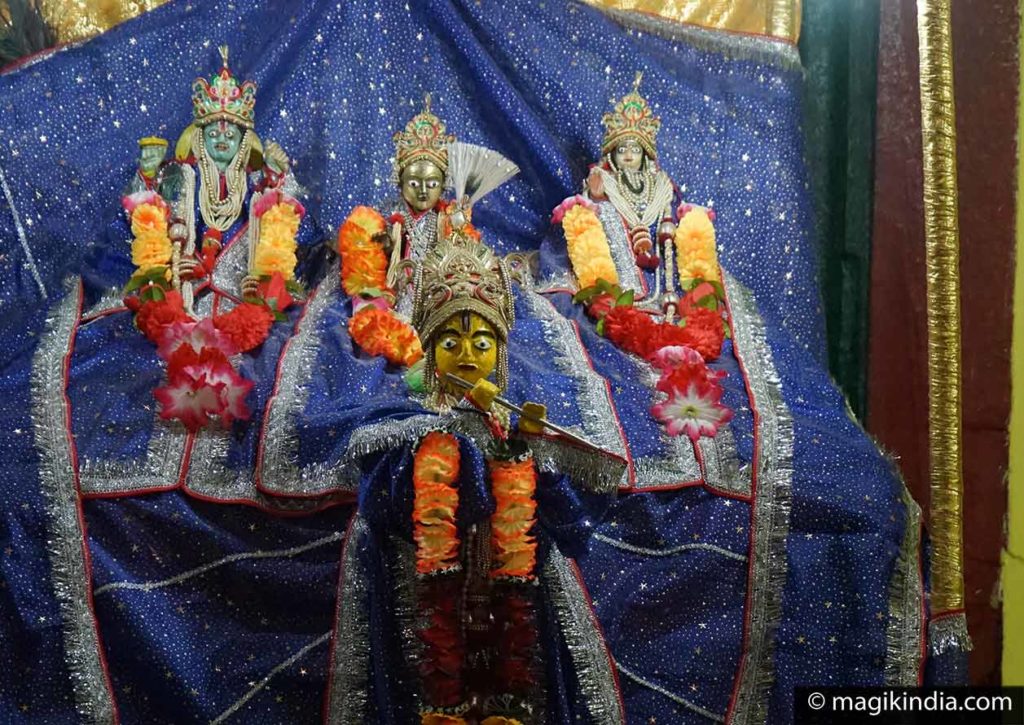
Rama Raja Temple

Ram Raja temple, certainly the most important of all Orchha’s temples, attracts many pilgrims.
It is the only temple in India where Rama is worshipped like a king in a palace. The palace was built by Madhukar Shah for his queen, in the 16th century.
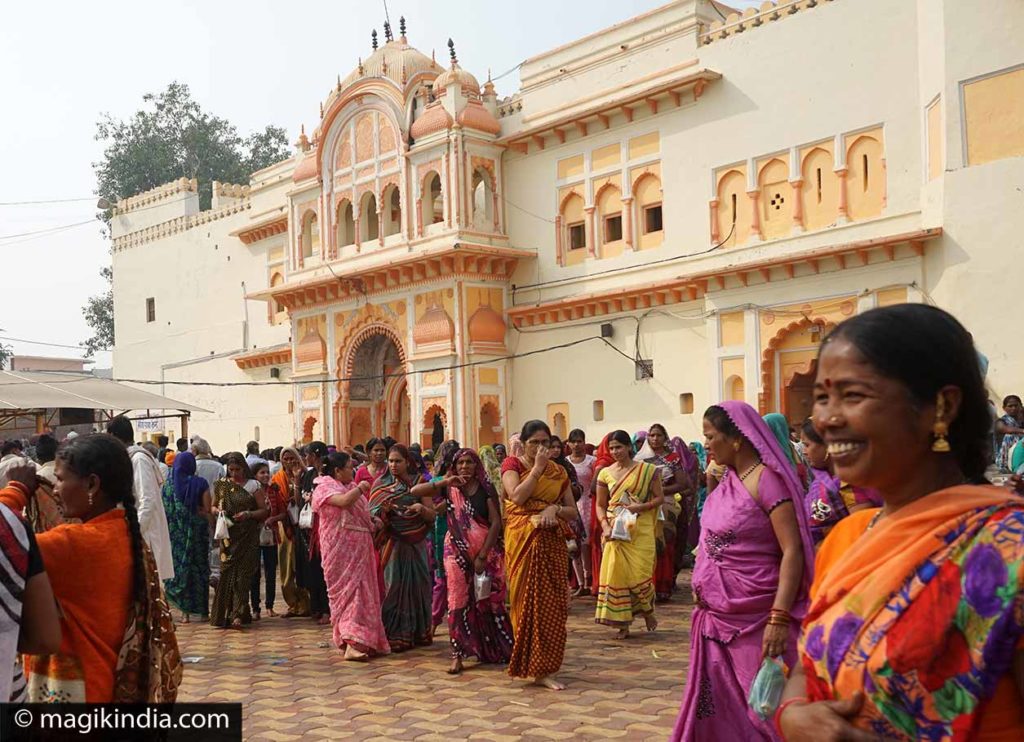
Legend has it that one day Lord Rama appeared to Madhukar Shah in a dream and told him to build a temple to him. The king followed Rama’s instructions and brought an idol from Ayodhya, Lord Rama’s birthplace. But building work on the temple was not yet completed when the statue arrived, so it was put in the palace.
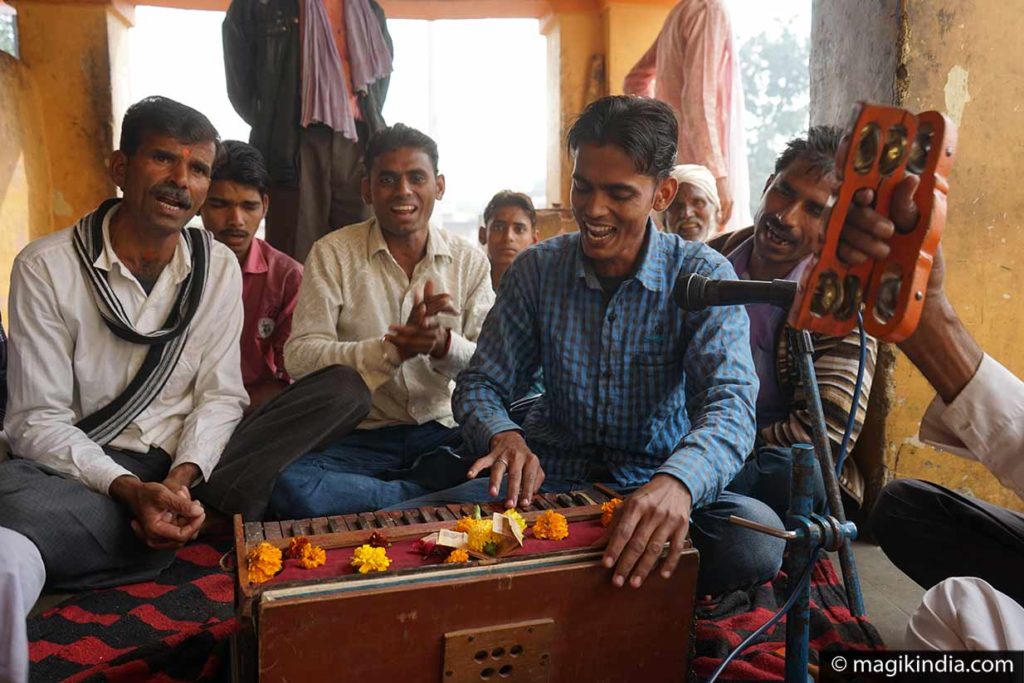
Later, the king remembered that in his dream, Lord Rama has specifically mentioned that his idol was not to be moved from the place where it was first put. So the king stopped building the temple and transformed the palace where the statue stood into a temple.
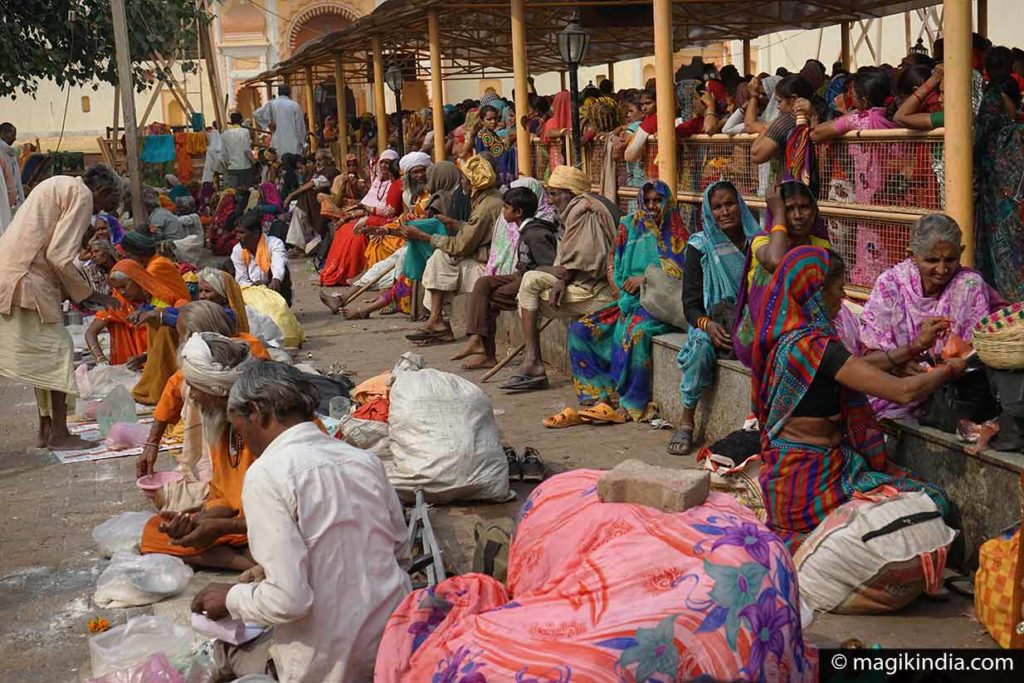
[ Glimpse of Orchha’s atmosphere during a festival at Rama Raj temple ]
Laxminarayana Temple
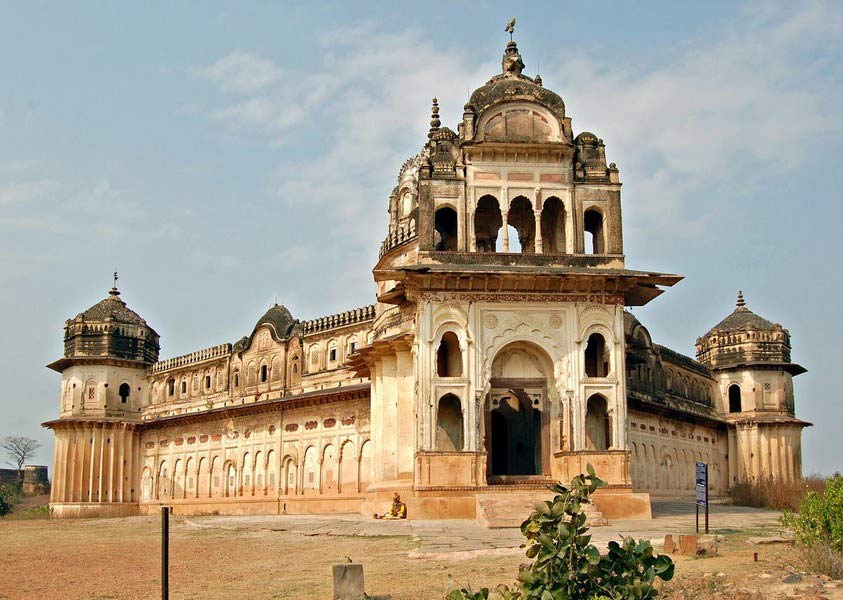
Laxminarayana temple was originally dedicated to Lakshmi, goddess of prosperity.
However, what catches the attention in this temple is above all its unique architecture: its fortified outer wall is square flanked by octagonal towers while the inner sanctuary is triangular … A curiosity not to be missed!
It contains some exquisite wall paintings on a variety of subjects, spiritual and profane like Indian epics or scenes from the British Raj then allies of the Bundelas.
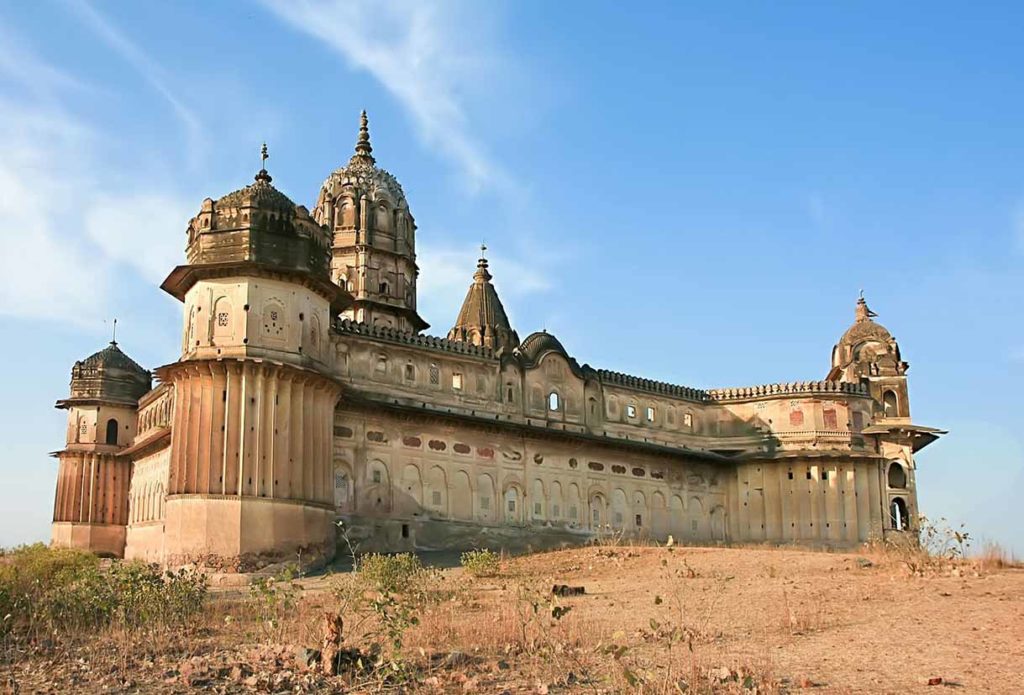
Durga Temple

This small shrine on a rock opposite Chaturbhuj temple is dedicated to the Hindu god Durga.
It appears to be closed, but in fact you can get in by slipping through a fence. Lulled by the sound of mantras, it has a lovely atmosphere.
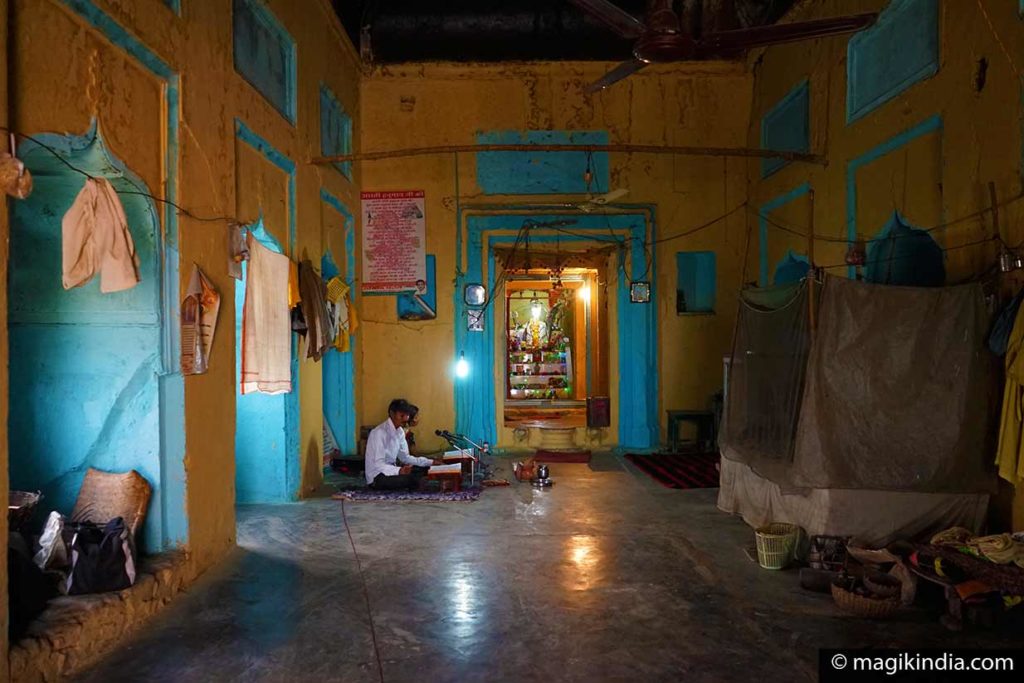

Chhatris, Royal Cenotaphs
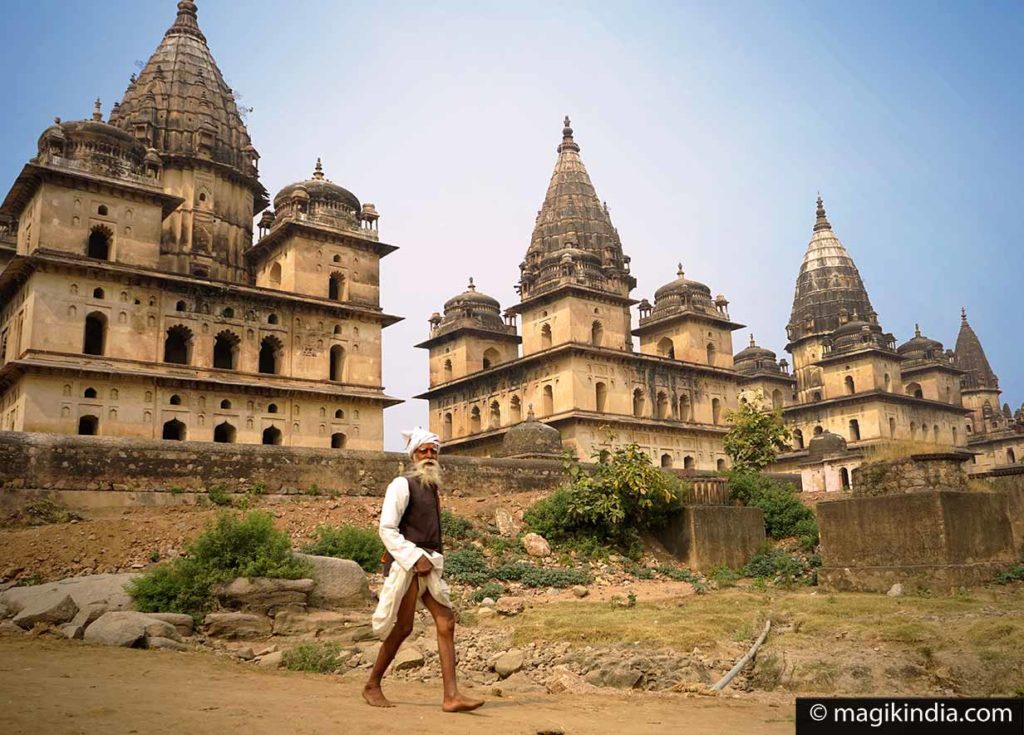
Built along the “Kanchan ghat” of the Betwa river, during the 16th and 17th centuries, the fourteen chhatris are undoubtedly the “highlight” of Orchha. These elegant buildings resembling small palaces are memorials to the rulers of Orchha.
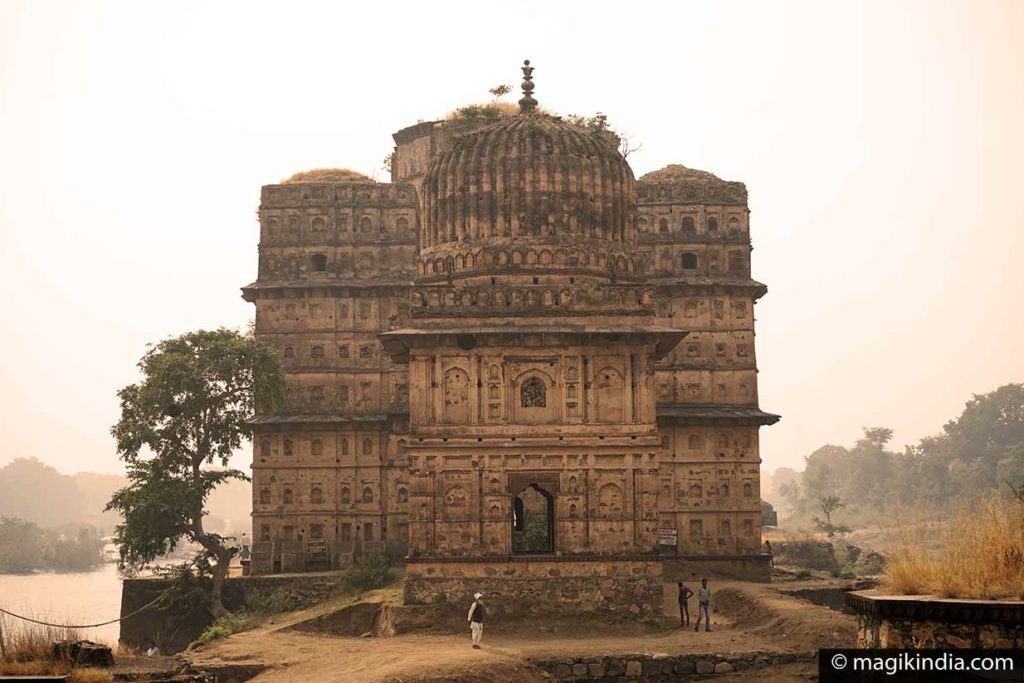
There are thirteen cenotaphs in the same complex, which have more or less the same architecture; only that of Bir Singh Deo standing at the edge of the river denotes with its unfinished structure; its domes were never completed.
You can enjoy a panoramic view of the chhatris as you cross the bridge over the Betwa.
